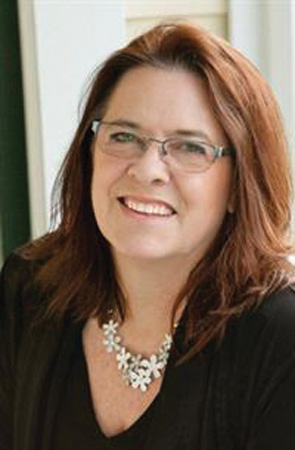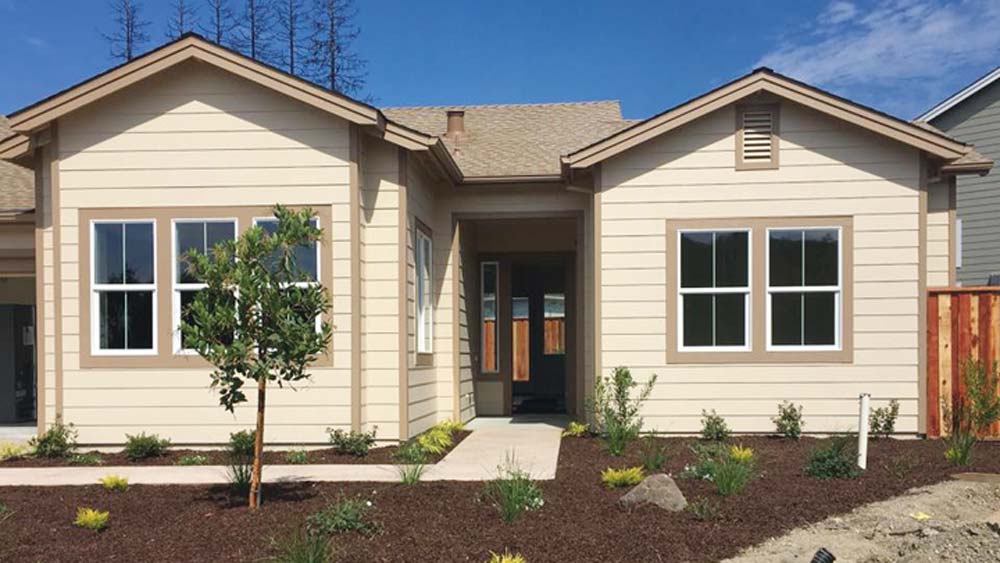
In late spring, North Bay counties are seeing a rise in interest from home buyers, at the same time cities are cultivating more apartment and home construction. Trends in the North Bay echo national shifts, including nearly a 10% rise in home construction in February.
Still, owners should expect housing prices to drop between 5% and 15%.
“This is a reversal of the home-buying spree that started in the initial phase of the pandemic. That encouraged close to a 35% increase across the North Bay over the last three years,” says Robert Eyler, economics professor at Sonoma State University.
The biggest factors slowing the home market are low inventory and high interest rates, says Allison Norman, real estate agent with Keller Williams in Santa Rosa.
“When mortgage interest rates began to rise, you could feel the home market slow down. We’re not getting as many multiple offers and huge overbids as we did the last two years,” says Norman.

Since 2008, there have been many changes in the way lending and appraisals are done. Stricter guidelines ensure home buyers can afford the property they purchase.
“Sellers need to understand that they may not get multiple offers or overbids in the current market,” says Norman.
Despite these concerns, the North Bay remains one of the most desirable places to relocate from more metropolitan parts of the Bay Area. Alexander Narodny, founder of Alamere Real Estate, which is based in Corte Madera, said new listings are down 49.5% year over year (YOY) in Marin County as of February 2023.
“Closed sales were down 34% YOY as well. Later in the spring, we should see supply start to increase,” says Narodny.
Logan Songer, general manager of Coldwell Banker Brokers of the Valley, which is based in Napa, says properties that are priced well may still receive multiple offers.
“The North Bay can offer more space and proximity to nature than other parts of the Bay Area for the price. We continue to see many buyers with cash or buyers that are not impacted by mortgage rates. The highest demand is for properties at the lower price points. Homes close to town continue to be in demand due to the proximity to restaurants, tasting rooms, events and live music, “ says Songer.
Later in the spring, a decrease in the cost of borrowing should spur sales. The Federal Housing Administration, which insures loans, reduced the monthly mortgage insurance. In addition, the U.S. Department of Veterans’ Affairs reduced its funding fee.
These changes will benefit many first-time homebuyers looking to qualify for mortgages, says George Adair, mortgage advisor for Cross Country Mortgage, LLC, based in Windsor.
“One of the concerns for borrowers is that Fannie Mae and Freddie Mac have added back loan-level price adjustments (LLPAs) for loans that they offer. LLPAs add on to the calculated cost for an interest rate,” says Adair.
Insurance no sure thing
Sales should increase in late spring into summer because of a stop to the rain and onset of higher temperatures. The shifts, coupled with renewed buyer interest due to owners making repairs, should encourage buyers driving in from the Bay Area and southern California, says Karen Orlando, real estate agent for Engel & Völkers in Santa Rosa.
“The North Bay’s prices haven’t toppled. We’re also seeing individuals and families who left the North Bay for more remote areas such as Idaho return. They didn’t realize how hard the winters would be,” says Orlando.
It may be more difficult to sell properties close to the Wildland Urban Interface (WUI), especially in the hills and along major rivers. Robert Stroud, agent for Farmers Insurance in Santa Rosa, says many insurance carriers stopped insuring properties prone to fire or flooding.
“The industry is just now catching up with calculating risk from the years of fires. Many carriers are leaving or threatening to leave Napa County. Recently, Chubb Limited is one of the few insurers covering properties in rural areas in and around Calistoga into Santa Rosa,” says Stroud. Stroud adds that insurers are now inspecting properties more often than they have done in the past three years.

The lack of insurers can also be a problem in Marin County. The California FAIR Plan is the only option for numerous homeowners in West Marin and owners of more secluded locations in Fairfax, Novato and Mill Valley. Policies may vary considerably in price within the same ZIP Code and development.
Michael Hyman, owner of Fulcrum Point Insurance in Santa Rosa, says Oakmont homes on the same block have policies with a wide price variance.
“Part of the cost variance depends on the size of the house and what upgrades have been made. Other times it’s related to what losses the property experienced. If there are tree limbs hanging over a house and debris in the yard, a policy could be canceled,” says Hyman.
This explains why a buyer should ask about the cost of insurance before considering a purchase.
“The cost may be higher than they expect. Insurers are raising rates, trying to make back what they lost in the fires and floods. Keeping your yard clean may help to maintain coverage,” says Hyman.
Remodels and ADUs on the rise
The demand for remodels is starting to outstrip that for new homes. First-time homebuyers especially are balking at the price of permitting and construction.
As of late March, David Keith, CEO and partner in Sonoma County Builders, Inc., a Santa Rosa-based restoration and construction company, had over 10 remodel jobs versus two new builds in Sonoma County.
“It was the opposite a few years ago. The uptick in improvements is partly due to the supply chain disruptions and materials scarcity. The good news is more labor and supplies are available. Framing crews are looking for work and prices for lumber and concrete are down,” says Keith.
Everyone has been caught off guard for high costs for other materials, such as tile, fixtures and cabinets.
“Homeowners with larger lots should consider building detached Accessory Dwelling Units (ADUs) to generate additional income. The height restrictions have been relaxed and permit fees are down to encourage new housing,” says Keith.
Scott Johnson is the director of the Napa Sonoma ADU Center, a Napa-based nonprofit that informs Napa and Sonoma County residents about ADU development. He says the cost of building an ADU is typically between $150,000 and $400,000.
“Yet ADUs offer a high potential to generate rental income. North Bay residents are also building ADUs for aging parents, adult children and adults with special needs. The Napa Sonoma ADU Center has fielded about 800 inquiries since January 2020,” says Johnson.

“ADUs are affordable, resilient units in backyards and above garages. They don’t require cities to spend additional monies on sewers, street lights, and road construction. A homeowner can do a cash refinance of a residence or reach out to Redwood Credit Union for an ADU loan,” says Johnson.
Keeping the cost for an ADU under control requires sticking to an 18-month to 2-year schedule. Homeowners should also choose a simple design, like a rectangle, and not waver on fit and finish choices like flooring and countertops.
Marin County is seeing the interest in ADUs rise to the extent that it has waived county permit fees up to $10,000 if a property owner agrees to restrict an ADU rental to a low-income or moderate-income household. The county may also hire an ombudsman to inform homeowners about costs and plans. Further, Marin County has developed a joint website with resources, educational materials and workshops with ADU Marin, a collaboration between Marin jurisdictions that shares information about ADUs. (See adumarin.org)
“Marin County oversees the unincorporated areas outside of incorporated cities, like San Rafael. We’re currently having conversations about how to encourage ADU development in rural areas where housing is scarce, such as West Marin. Barriers to development in West Marin…include irregular topography and the lack of sewer infrastructure. This results in a higher cost for ADUs,” says Aline Tanielian, planner for Marin County.

One of the ways Marin County is looking at potential solutions is through the SB2 pilot study on septic engineering. As part of this study, an engineering firm completed testing of the septic systems of 10 homes in rural areas seeking to add ADUs to their properties. The county is also exploring additional alternate water and sewer systems that could be adopted as part of the county’s environmental health services codes and regulations.
Tammy Taylor, senior environmental planner for Marin County, says improvements in technology for water conservation and building practices over time should support more ADU construction in the long term.
“Better metrics and better water-saving building features can lead to advancements, which could help lower the cost of this type of housing,” says Taylor.
How Housing Elements drive action
Housing Elements, city- and community-developed blueprints for growth, provide a sense of direction for every town, city, and county in California. Localities that do not meet targets for adding to housing inventory face state scrutiny and financial penalties. The Association of Bay Area Governments (ABAG), a regional planning agency, sets the Regional Housing Needs Allocations (RHNAs) for localities in the nine counties that comprise the Bay Area.
Napa provides an example of how one development in a city can affect an entire county’s progress. The total RHNA for Napa County for 2023-2031 is 2,669 new units. In December 2019, the City of Napa and the County of Napa agreed to transfer 80% of the county’s total RHNA units to the City of Napa. This agreement facilitated the annexation of the 154-acre Napa Pipe site to the City of Napa.
When completed, the Napa Pipe site should contain 945 homes, just over 35% of the county’s RHNA. Projects like the Napa Pipe help contribute to the housing stock. This is because the development agreement specifies timelines and performance measures the developer and city must meet, says Ricky Caperton, planning manager for the City of Napa.
“Local governments help by streamlining the approval and permitting processes,” adds Caperton.
San Rafael is another example of how progress in a city shapes the goals of the county. San Rafael’s RHNA of 3,220 units is just under 23% of the total RHNA for Marin County. The city’s challenges include the high cost of land and viable solutions to serve people experiencing homelessness. The city is working to eliminate barriers to housing construction identified through frequent discussions with developers, says Leslie Mendez, planning manager for the City of San Rafael.
Mendez believes approval of the Downtown Precise Plan in 2021 is one factor in the solution. “This plan streamlines the entitlement process for multi-use developments downtown, which should lead to more housing being built. Reducing parking standards to be more flexible also helps. Allocating space for parking can hinder housing from being constructed,” says Mendez.
San Rafael is making an enormous effort to stay on track to construct affordable housing. This is being accomplished through collaboration with Marin County to reduce gaps in services for people experiencing homelessness, says Alexis Captanian, housing program analyst for the City of San Rafael.
Santa Rosa’s RHNA is 4,685 units, a little over 32% of the total of 14,562 units for Sonoma County.
“Rebuilding of residential units destroyed by the fires do not count toward that total,” says Jessica Jones, deputy director of planning for the City of Santa Rosa.
Petaluma’s RHNA is 1,910 units, a little over 13% of the total for Sonoma County. Steady progress is the city’s key to success.

“We’re issuing permits and seeing rebuilding happen at roughly the same rate that we did in 2022 and 2021. We’re seeing more growth on the east side and south end of the city. That’s partly because larger, long-term developments like Quarry Heights are finishing up,” says Brian Oh, director of community development for the City of Petaluma.
Rohnert Park has a RHNA of 1,580 units, just shy of 11% of the total for Sonoma County. The past RHNA cycle called for Rohnert Park to produce 899 units. Instead, the city produced 1,972 units.
“We are reaping the benefits of planning that goes back decades,” says Jenna Garcia, housing manager for the CIty of Rohnert Park.
Collaboration with nonprofits, including Burbank Housing and Housing Land Trust of the North Bay, plays a significant part in ensuring affordable housing gets built, says Jeff Beiswenger, planning manager for the City of Rohnert Park. Such work ensured the incorporation of affordable housing units in University District, Willow Glen and SOMO Village.
Concerns for Healdsburg, with a RHNA of 476 units, a little over 3% of the total for Sonoma County, reveal the importance of agreements in making progress.
“In Healdsburg, there’s a lack of understanding in the community about where new housing should be sited. We should be intensifying development downtown before planning for more housing on the south side of Memorial Bridge. That is the environmentally and economically sustainable approach,” says Jim Heid, founder of Craft DnA, a Healdsburg-based boutique real estate development firm.
One of the city’s obstacles is that in 2000, voters passed Measure M, a growth advisory rule which limits how many units can be built per year, says Scott Duiven, community development director for the City of Healdsburg. Measure M excludes affordable housing units and ADUs.
Healdsburg also has the challenge of not being able to grow out of the city’s boundaries.
“When we build affordable housing, we have to deal with constraints, including agriculture preserves and the Wildland Urban Interface. These features surround our city. They limit the ability to build or require mitigation measures. When building close to the WUI, we want to ensure that we address fire risk before we start construction,” says Stephen Sotomayor, housing director for the City of Healdsburg.
The need for low- and middle-income housing
As the housing market picks up, the North Bay has to make more progress to get blue collar and lower-range white collar workers on paths to home ownership. According to March statistics from Zillow, the average value of a home in Sonoma County is $766,870, up 7% from last year.
This puts home prices, plus condo or homeowner’s association fees, property taxes and homeowner’s insurance, out of reach of many workers.
“California is projecting a budget deficit going forward. Partnerships with nonprofits like ours will be necessary to meet the affordable housing targets of the Housing Elements,” says Ben Wickham, COO of Burbank Housing.
Encouraging development in central and downtown areas is part of the solution, says Calum Weeks, policy director of Generation Housing, a Santa Rosa-based housing advocacy nonprofit focused on Sonoma County’s housing needs. Weeks says building taller and maximizing density on smaller parcels increases overall taxable revenue. It also boosts foot traffic for parks, stores and other services near housing.
“Important opportunities like Casa Roseland, a housing project in Roseland, is one example of how modest- to higher-density, coupled with more essential services, greatly enhances an area outside of the immediate core downtown area of Santa Rosa. The idea is to create a community with a diversity of housing options that enhance well-being and long-term sustainability,” said Weeks.
Developing or preserving housing with prices stabilized by a land trust is also important, says Dev Goetschius, executive director of Housing Land Trust of the North Bay, a Petaluma-based nonprofit.
“A buyer who signs up with us is offered a home in a limited price range, which is tied to their income. The agreement involves selling the home to a new buyer at the same income level the owner was at when they bought the house,” says Goetschius.
Housing Land Trust of the North Bay is currently working with Cloverdale, Cotati, Healdsburg, Petaluma, Rohnert Park, Santa Rosa, Sebastopol, the County of Sonoma and Windsor to preserve existing homes and build new homes for qualifying working-class families.

Yet on a larger scale, the pricing out prevents thousands of people in the North Bay from building generational wealth through home ownership.
“Nonprofits, cities, counties and the community should continue to work together on pushing to increase the resources that are available for affordable housing,” says Wickham.
As residents continue to look for solutions, like pooling family income to qualify for mortgages, local lenders are trying to help through financial wellness programs.
“We always encourage members to set up a way to save. In addition, we let them know we’re here for them in good times and bad. We want them to stay in their homes and cars and work to set them up to repay their loans,” says Michelle Anderson, chief lending officer of Redwood Credit Union.
Anderson adds that recreating consumer confidence means educating buyers. The goal is to help homeowners plan the way to pay for their mortgage, property taxes, insurance policy and home repairs for decades to come.
“This is where members of a local credit union like RCU play an important role. Our direction is set by the fact that our members have told us they see residential housing becoming available. They believe our local workforce can help build a path to homeownership,” says Anderson.
5 Tips for First Time Homebuyers
First-time homebuyers facing high interest rates and high insurance rates have a number of tools at their disposal. These include:
* Selecting an adjustable-rate mortgage (ARM) with a lender. “These are still a very good option. Redwood Credit Union offers an adjustable rate loan where one has the option to pay no closing cost at close of escrow. ARMs present a great opportunity for homebuyers to get into a home with a lower payment than a 30-year fixed mortgage,” says Diane Berthinier, senior vice president of business services for Redwood Credit Union.
* Considering a residence on a fire lot. A completed rebuild is likely to be built with fire-resistant materials and with new construction methodologies. There are different steps and guidelines to build in a city than in an unincorporated area of the county. A homebuyer should check the rebuilding steps and guidelines for the site where the house is located.
* Self-employed individuals should consider a non-qualified mortgage, also known as a non-QM loan. “These are loans that do not conform with the income guidelines set by the Consumer Financial Protection Bureau. They’re meant for homebuyers who cannot conform to requirements for a qualified mortgage. A higher number of people are looking into this option due to the rise in layoffs and self-employment,” says George Adair, mortgage advisor at Cross Country Mortgage, LLC in Windsor.
* Keeping an eye on your credit and paying your bills on time. “A person’s credit score affects much in the lending process. It can determine someone’s qualification and what their rate and payment may be. We encourage our members to periodically check their credit and their score. If someone needs help improving their credit, RCU has tools and resources to enable that success,” says Michelle Anderson, chief lending officer for Redwood Credit Union.
* Partnering with parents and adult children to qualify for a mortgage. “This can potentially increase buying power and solidifies the lender’s ability to approve credit. Everyone entering the transaction should understand the commitment of the credit request,” says Berthinier.



